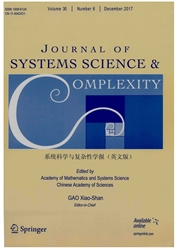

 中文摘要:
中文摘要:
这份报纸试图与异构的代理人在行为模型的解释力量上贡献文学。在场的作者是由动态噪音的非线性的确定的过程 buffeted 的一个新非线性的结构的证券市场模型。外长的噪音与基本的值的 IID 正常革新的假设被介绍给模型以便调查吵闹的动力学怎么与确定的过程交往。市场由二种典型商人类型组成:合理信奉正统派基督教的人和固定地合理的商人由贪婪和害怕管理了。当关键参数被改变,在噪音和确定的元素之间的相互作用决定系统的进化进程。作者发现模型能产生动态的展览和非常 S&P500 类似于那些的统计性质索引的时间系列,例如轻快聚类,胖尾巴(leptokurtosis ) ,在方形、绝对的回来的自相关,更大的振幅,碰撞和水泡。作者也在我们的数据调查非线性的依赖结构。结果显示 GARCH 类型模型不能完全在我们的模仿的市场说明所有非线性,它与从真实市场的结果因此一致。看起来非线性的结构的模型是更有力的给满足的解释比传统的随机的途径出售行为。
 英文摘要:
英文摘要:
This paper aims to contribute to the literature on the explanatory power of behavior models with heterogeneous agents. The authors present a new nonlinear structural stock market model which is a nonlinear deterministic process buffeted by dynamic noise. An exogenous noise is introduced to the model with the assumption of IID normal innovations of the fundamental value in order to investigate how noisy dynamics interacts with deterministic process. The market is composed of two typical trader types: the rational fundamentalists and the boundedly rational traders governed by greed and fear. The interaction between noise and deterministic element determines the evolution process of the system as key parameters are changed. The authors find the model is able to generate time series that exhibit dynamical and statistical properties closely resembling those of the S&:P500 index, such as volatility clustering, fat tails (leptokurtosis), autocorrelation in square and absolute return, larger amplitude, crashes and bubbles. The authors also investigate the nonlinear dependence structure in our data. The results indicate that the GARCH-type model cannot completely account for all nonlinearity in our simulated market, which is thus consistent with the results from real markets. It seems that the nonlinear structural model is more powerful to give a satisfied explanation to market behavior than the traditional stochastic approach.
 同期刊论文项目
同期刊论文项目
 同项目期刊论文
同项目期刊论文
 期刊信息
期刊信息
